As a rule, honey is purchased in quantities that are simply not possible to be consumed at a time. Saturated, many simply leave it on a desk or a window sill, or pour it into the first container that came under the arm, without thinking about how to store honey at home. After all, there are many factors that will determine the shelf life of this beekeeping product and the speed of the crystallization process. It goes without saying that there is no such container that could save a valuable gift of nature in that form and during the time that honeycombs can provide. But still, with the right approach to the issue, you can enjoy the original taste and take full advantage of its medicinal properties for more than a decade.
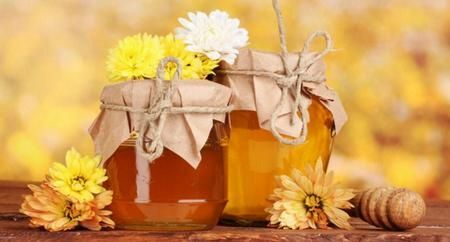
The easiest way out is to get as much honey as you need in a specific situation. Bought - ate. But in some cases it is simply impossible to find a container with a small-volume product on sale, since honey is usually bought by large banks or even kegs. It's so accepted. That is why it is necessary to approach with particular care the issue of choosing the optimal conditions for its storage.
Choose a suitable place
Honey, unlike other food products, is able to maintain its healing properties for a fairly long period of time, but for this, first of all, it is necessary to create favorable conditions for it. And the first on the list is the question of choosing a place. So, where to store honey, and what conditions must be met?
- Protected from direct sunlight.
- Temperature mode.
- Humidity of air.
The dark place
The first rule is that the place for storing honey should be dark or darkened. When sunlight hits, the product very quickly loses all its medicinal properties, because under the influence of intense light, the useful product turns into a mass of carbohydrates, and valuable components and enzymes are simply destroyed. Therefore, you can not store honey on a window sill and a dining table.
Important! Do not store honey next to food or substances( paint, fish, canned and pickled vegetables) that have an intense flavor, as it is capable of absorbing odors, while losing its taste.
Many people prefer to store this product in the common compartment of the refrigerator. This is permissible, but only if certain storage conditions of honey are observed:
- the temperature should not be below + 5 ° C;
- for storage is better to prefer the compartment on the door;
- honey should be in hermetically sealed container, which will prevent moisture from entering and foreign odors;
- must constantly monitor the level of humidity.
It's great if the refrigerator has a dry freeze function. In this case, it is not necessary to remove condensate accumulated on the walls and shelves.
If we talk about the cellar as a place to save a valuable beekeeping product, then it should be mentioned that there are not the most suitable conditions for storing honey when it is in a transparent container.
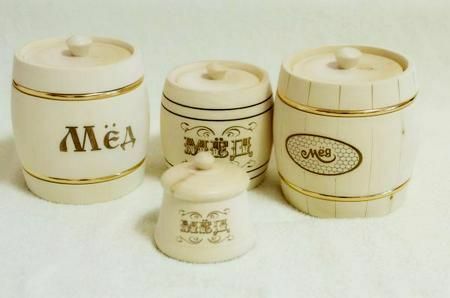
wax is added there. In addition, everything is stored in the cellar - from building materials to fresh and pickled food. It is important to take care that the aromas do not penetrate into the honey tank. And grains, salt and sugar should be removed away, as they contribute to the processes of fermentation.
Storage temperature
The second rule is that the product should be in a relatively warm room. If the ambient air temperature is too high, the biologically active substances and vitamins contained in this beekeeping product will lose their value. The same applies to adding it to hot tea or to freshly boiled milk. The optimum storage temperature for honey can range from -10 ° C to + 5 ° C.
Important! If the temperature is below the permissible minimum mark, the honey will quickly become loosened and become firm, and with an increase in the optimum level the product will darken, start to taste bitter and lose its useful qualities.
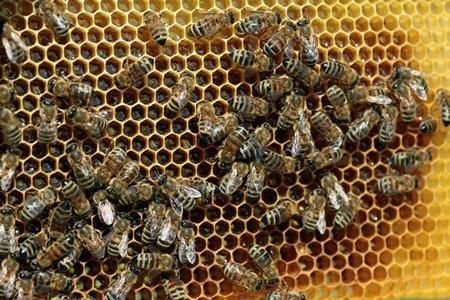
Air humidity
The third rule is the optimum humidity of air, which can range from 60% to 80%.If the room is too damp, then honey quickly absorbs moisture and, oversaturation will lead to a quick souring of the product. Here, you can even not mention that honey will immediately lose its value.
But in this case, an important role will play a variety of honey. For example, acacia nectar is more resistant to a moist environment, while a paddy, on the other hand, is too sensitive to this factor and is able to maintain its qualities only when the air humidity is not more than 60%.
Important! Natural honey under normal storage conditions by October should change its consistency to a more dense and become opaque. If the product has remained in its original form, then you have purchased falsified or previously melted honey, which has lost all its medicinal properties.
Summing up the above, it can be concluded that for storage of honey at home, the usual locker in your kitchen is ideal, the door of which should be tightly closed.
Maximum storage time
Honey storage time depends primarily on external conditions. Since bees are able to reliably insulate the hive, even in a frosty winter, ideal conditions remain within it, and nectar can preserve its properties for a long time. This is due, in the first place, a high content of vitamins. This environment simply prevents the emergence of bacteria, and honey does not sour.
If we talk about how much honey is stored at home, then on average this time will not exceed two years. Temperature fluctuations, humidity and sunlight are the main factors that influence the shortening of the shelf life.
Undoubtedly, if honey is placed in special kegs with propolis and transferred to a cellar, then the period of ripening of the product can be significantly increased, but in an ordinary apartment, creating such conditions is quite problematic.
Tip! It is necessary to purchase fresh natural product of the last season. And for this it is necessary to find an beekeeper. Only in this way you will get a guarantee that you are buying quality honey.
We choose dishes
After the place is chosen, a new question arises - in what capacity is honey stored at home? First of all, you need to pick up the dishes, which will be hermetically sealed, since neither scents nor moisture should enter the interior.
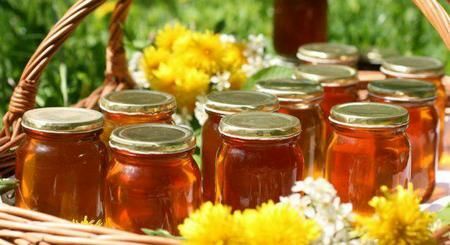
. Before placing honey in a container, it must be thoroughly washed and dried.
Tip! In no case can you add a new portion of honey to the jar with the old product - this will cause fermentation.
It is allowed to store honey in such containers:
- from natural wood - willow, alder, linden, birch;
- pots made of clay;
- ceramic cookware;
- made of tinplate, aluminum and stainless steel;
- plastic containers;
- enameled dishes.
Important! It is forbidden to use barrels from coniferous tree species, since they have an intense aroma. In an oak barrel honey becomes black, and aspen wood makes it too bitter.
There is also a taboo on iron utensils - the metal will oxidize, as a result of which the honey will lose useful and taste qualities. In addition, in the course of chemical reactions, salts and poisonous substances that are hazardous to human health are formed.
Plastic
Today plastic ware for storing products is very popular. It is convenient, light in weight and inexpensive. As for the storage of honey in it, it is possible, but it is necessary to choose only certified containers. You can use special food plastic.
The maximum shelf life in such a container is one year, but different manufacturers will specify different expiration dates for this package. Therefore, always find out the allowable time for storing food.
Important! If you exceed this time, you can seriously damage your health, since honey, being an active substance, draws chemical impurities from the plastic.
Clay
Perhaps the most correct option, as to how to properly store honey at home will be pottery. Honey will not be oxidized in such a container, sun rays and moisture do not penetrate inside, and thanks to small pores, the optimum temperature regime will always be maintained.
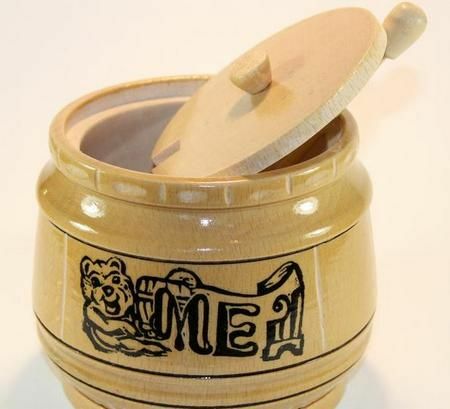
Why does honey become thick?
Many are wondering about how to keep honey liquid. But not everyone knows that such a state is peculiar only to a freshly withdrawn product. The newly obtained honey has a characteristic light shade, a transparent structure and a liquid consistency. Over time, it becomes turbid and dark. And this is normal. Such a process indicates the naturalness and high quality of honey.
Important! Crystallization should begin only after honey changes its hue and density. If the product is immediately candied, then this is evidence that you have purchased falsified or poor-quality nectar.
Sometimes it can be seen that with proper storage, honey begins to separate into thick and liquid substances. This will mean that the nectar was collected unripened and absorbed a large amount of water. Such honey is unsuitable for use. By winter, the nectar must necessarily thicken and crystallize, otherwise such a product will also be unsuitable for consumption.
Also when stored, you may find that the honey began to wander. Why is this happening, is it possible to use such a product and how can it be "resuscitated"?For all these questions, look for answers in the article - Honey wanders: will the disease heal or aggravate?
